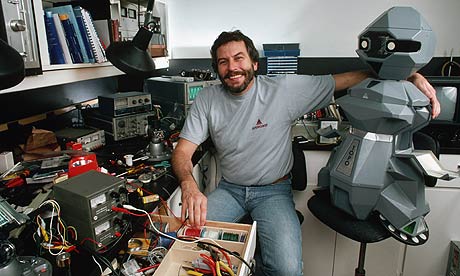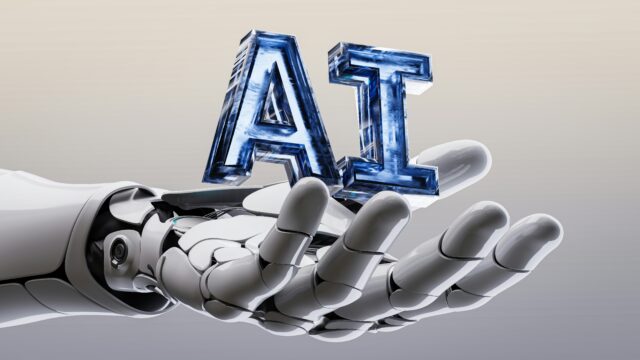SAN FRANCISCO (AP) — When Steve Jobs adopted “think different” as Apple’s mantra in the late 1990s, the company’s ads featured Albert Einstein, Bob Dylan, Amelia Earhart and a constellation of other starry-eyed oddballs who reshaped society.
Nolan Bushnell never appeared in those tributes, even though Apple was riffing on an iconoclastic philosophy he embraced while running video game pioneer Atari in the early 1970s. Atari’s refusal to be corralled by the status quo was one of the reasons Jobs went to work there in 1974 as an unkempt, contemptuous 19-year-old. Bushnell says Jobs offended some Atari employees so much that Bushnell eventually told Jobs to work nights when one else was around.
Bushnell, though, says he always saw something special in Jobs, who evidently came to appreciate his eccentric boss, too. The two remained in touch until shortly before Jobs died in October 2011 after a long battle with pancreatic cancer.
That bond inspired Bushnell to write a book about the unorthodox thinking that fosters the kinds of breakthroughs that became Jobs’ hallmark as the co-founder and CEO of Apple Inc. Apple built its first personal computers with some of the parts from Atari’s early video game machines. After Jobs and Steve Wozniak started Apple in 1976, Apple also adopted parts of an Atari culture that strived to make work seem like play. That included pizza-and-beer parties and company retreats to the beach.
“I have always been pretty proud about that connection,” Bushnell said in an interview. “I know Steve was always trying to take ideas and turn them upside down, just like I did.”
Bushnell, now 70, could have reaped even more from his relationship with Jobs if he hadn’t turned down an offer from his former employee to invest $50,000 in Apple during its formative stages. Had he seized that opportunity, Bushnell would have owned one-third of Apple, which is now worth about $425 billion — more than any other company in the world.
Bushnell’s newly released book, “Finding The Next Steve Jobs: How to Find, Hire, Keep and Nurture Creative Talent,” is the latest chapter in a diverse career that spans more than 20 different startups that he either launched on his own or groomed at Catalyst Technologies, a business incubator that he once ran.
He has often pursued ideas before the technology needed to support them was advanced enough to create a mass market. Bushnell financed Etak, an automobile mapping system created in 1983 by the navigator of his yacht and later sold to Rupert Murdoch’s News Corp. Bushnell also dabbled in electronic commerce during the 1980s by launching ByVideo, which took online orders through kiosks set up in airports and other locations. In his most costly mistake, Bushnell lost nearly all of a $28 million investment in Androbot, another 1980s-era startup. It developed 3-foot-tall robots that were supposed to serve the dual role of companion and butler. (Bushnell relied on Apple’s computers to control the early models.)
Bushnell’s best-known accomplishments came at Atari, which helped launch the modern video game industry with the 1972 release of “Pong,” and at the Chuck E Cheese restaurant chain, which specializes in pizza, arcade entertainment and musical performances by animatronic animals. It’s an odyssey that led actor Leonardo DiCaprio to obtain the film rights to Bushnell’s life for a possible movie starring DiCaprio in the lead role.
While at Atari, Bushnell began to break the corporate mold, creating a template that is now common through much of Silicon Valley. He allowed employees to turn Atari’s lobby into a cross between a video game arcade and the Amazon jungle. He started holding keg parties and hiring live bands to play for his employees after work. He encouraged workers to nap during their shifts, reasoning that a short rest would stimulate more creativity when they were awake. He also promised a summer sabbatical every seven years.
He advertised job openings at Atari with taglines such as, “Confusing work with play every day” and “Work harder at having fun than ever before.” When job applicants came in for interviews, he would ask brain-teasing questions such as: “What is a mole?”; “Why do tracks run counter-clockwise?” and “What is the order of these numbers: 8, 5, 4, 9, 1, 7, 6, 3, 2?”
Bushnell hadn’t been attracting much attention in recent years until Walter Isaacson’s best-selling biography on Jobs came out in 2011, just after Jobs’ death. It reminded readers of Bushnell’s early ties to the man behind the Macintosh computer, iPod, iPhone and iPad.
Suddenly, everyone was asking Bushnell about what it was like to be Jobs’ first boss. Publisher Tim Sanders of Net Minds persuaded him to write a book linked to Jobs, even though Bushnell had already finished writing a science fiction novel about a video game hatched through nanotechnology in 2071.
“The idea is to become a best-selling author first and then the rest of my books will be slam dunks,” Bushnell said. To get his literary career rolling, Bushnell relied on veteran ghostwriter Gene Stone, who also has written other books, including “Forks Over Knives,” under his own name.
Bushnell’s book doesn’t provide intimate details about what Jobs was like after he dropped out of Reed College in Portland, Ore., and went to work as a technician in 1974 at Atari in Los Gatos, Calif. He had two stints there, sandwiched around a trip to India. During his second stint at Atari, in 1975, Jobs worked on a “Pong” knock-off called “Breakout” with the help of his longtime friend Wozniak, who did most of the engineering work on the video game, even though he wasn’t being paid by Atari. Jobs left Atari for good in 1976 when he co-founded Apple with Wozniak, who had been designing engineering calculators at Hewlett-Packard Co.
Jobs and Bushnell kept in touch. They would periodically meet over tea or during walks to hash out business ideas. After Bushnell moved to Los Angeles with his family 13 years ago, he didn’t talk to Jobs as frequently, though he made a final visit about six months before he died.
There are only a few anecdotes about Bushnell’s interaction with Jobs at Atari and about those meetings around Silicon Valley.
The book instead serves as a primer on how to ensure a company doesn’t turn into a mind-numbing bureaucracy that smothers existing employees and scares off rule-bending innovators such as Jobs.
Bushnell dispenses his advice in vignettes that hammer on a few points. The basics: Make work fun; weed out the naysayers; celebrate failure, and then learn from it; allow employees to take short naps during the day; and don’t shy away from hiring talented people just because they look sloppy or lack college credentials.
Many of these principles have become tenets in Silicon Valley’s laid-back, risk-taking atmosphere, but Bushnell believes they remain alien concepts in most of corporate America.
“The truth is that very few companies would hire Steve, even today,” Bushnell writes in his book. “Why? Because he was an outlier. To most potential employers, he’d just seem like a jerk in bad clothing.”
Bushnell says he is worried that Apple is starting to lose the magic touch that Jobs brought to the company. It’s a concern shared by many investors, who have been bailing out of Apple’s stock amid tougher competition for the iPhone and the iPad and the lack of a new product line since Tim Cook became the company’s CEO shortly before Jobs’ death. Apple’s market value has dropped by 36 percent, or about $235 billion, from its all-time high reached last September.
The incremental steps that Apple has been taking with the iPod, iPhone and iPad have been fine, Bushnell says, but not enough to prove the company is still thinking differently.
“To really maintain the cutting edge that they live on, they will have to do some radical things that resonate,” Bushnell said. “They probably have three more years before they really have to do something big. I hope they are working on it right now.”
Bushnell is still keeping busy himself. When he isn’t writing, he is running his latest startup, Brainrush, which is trying to turn the process of learning into a game-like experience. He says he hopes to fix an educational system that he believes is “incorrect, inefficient and bureaucratic — all the things you don’t want to see in your workforce of the future.”












